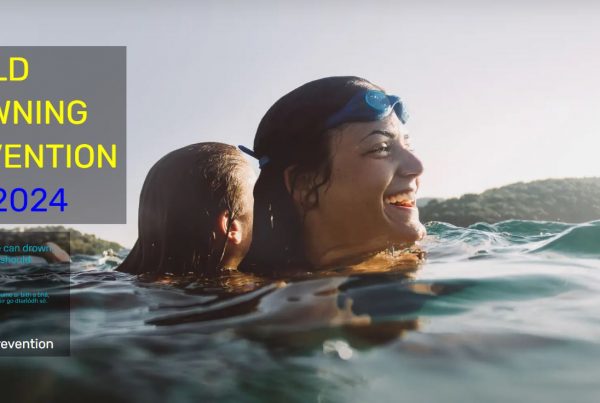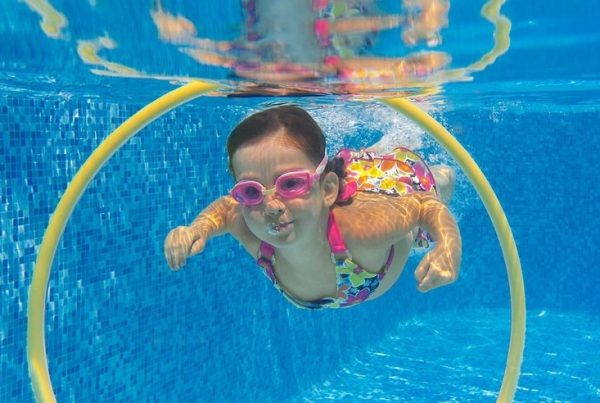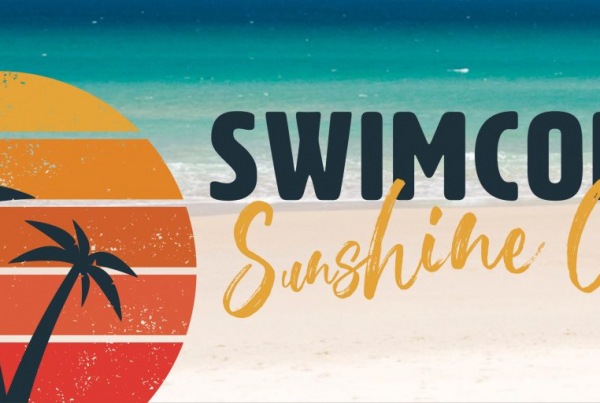Know the drowning risks to avoid summer tragedy
To mark National Water Safety Awareness Week (June 15th – 21st), Irish Water Safety is appealing to teachers in our 3,500 primary schools to give the 500,000 children the vital information they need before the summer holidays.
People drown silently, quickly and sometimes in only inches of water. They can drown beside others who are completely unaware. Children are particularly at risk and need constant supervision near water. National Water Safety Awareness Week is part of Irish Water Safety’s public appeal to enjoy the water while keeping yourself and your family safe by taking advice from Irish Water Safety’s website www.iws.ie.
In addition, Irish Water Safety (IWS) is appealing to parents to enroll their children in one of its classes being run by IWS Volunteers at open water venues nationwide. Further details are also available at www.iws.ie.
Children are naturally curious about water therefore parents should check if their local primary school has yet introduced Irish Water Safety’s Primary Aquatics Water Safety (PAWS) programme which is a component of the primary school curriculum that teaches children how to stay safe around water. Much of the programme is easily delivered as it is classroom based yet many primary schools have yet to deliver this training. With three weeks to go before schools close, there is still time for teachers and parents to teach essential life skills to keep children safe from drowning.
Advice to keep children safe from drowning:
- Swim with others, never alone
- Avoid swimming in unfamiliar places
- Don’t swim when you’re hot or tired
- Don’t swim out after anything drifting
- Stay in the water for short periods
- Swim in daylight not in darkness
- Swim parallel and close to the shore
- Pay attention to signs on the beach
- Don’t be a bully to others in water
- Learn to use equipment before trying it out
- Never use inflatable toys in open water
- Swim in view of Lifeguards and heed their advice
- Wear a Lifejacket with crotch strap when boating or fishing from shore
- Learn Basic Life Support and Lifesaving Skills
- More online advice is available at www.iws.ie
Safe Swimming Advice:
- Don’t swim alone
- Don’t swim when you’re hot or tired
- Don’t swim out after anything drifting
- Don’t swim out to sea
- Do what the lifeguard tells you
- Pay attention to signs on the beach
- Learn to use equipment before trying it out
- Don’t swim in strange places
- Don’t stay in the water too long
- Swim parallel and close to the shore
- Never use inflatable toys
- Don’t be a bully
- Learn Basic Life Support
Safe Boating Advice:
- Check condition of boat and equipment, hull , engine, fuel, tools, torch.
- Check the weather forecast for the area.
- Check locally concerning dangerous currents, strong tides etc.
- Do not drink alcohol while setting out or during your trip.
- Carry an alternative means of propulsion e.g. sails and oars or motor and oars.
- Carry a first aid kit on board and distress signals (at least two parachute distress rockets, two red hand flares).
- Carry a fire extinguisher, a hand bailer or bucket with lanyard and an anchor with rope attached.
- Carry marine radio or some means of communication with shore.
- Do not overload the boat – this will make it unstable.
- Do not set out unless accompanied by an experienced person.
- Leave details of your planned trip with someone ashore – including departure and arrival times, description of boat, names of persons on board, etc.
- Wear a Personal Flotation Device at all times.
- Keep an eye on the weather – seek shelter in good time.
- In Marine Emergencies, call 112 or 999 and ask for Marine Rescue.
Water Safety Around Farms
- Ponds on farms are often out of view of the house so always have an adult with you when you are feeding ducks or playing.
- Slurry pits are not solid enough to stand on. Keep well away as you would quickly sink.
- Reeds and grass often obscure the edge of the pond.
- The banks of a pond may be weak and could give way under your weight.
- Holes or drains left exposed after farm building work should be closed.
- Be cautious riding horses near and into water.
- You cannot tell the depth of a hole if it is full of water.
- Do not play near the edge of a riverbank as it might crumble away suddenly.
- Do not retrieve model boats by wading in.
- Never walk on ice-covered waterways.
Water Safety In and Around the Home
Each year, children die in needless drowning accidents in or near their home. Children are most at risk because they feel that their house is safe but there are many possible dangers. Remember you can drown in very shallow water, in such places as the stream or drain at the end of the garden, the fish or garden pond, the play pool or swimming pool, the well, barrel or water tank, the septic tank or slurry pit. With a little care and attention these accidents can be prevented.
Know the dangers in the home:
- Make sure that you are always supervised at bath time.
- Empty baths after use and when full, see that no chairs are nearby onto which younger children can climb into the bath.
- Leave bath plugs out of reach.
- Keep away from washing machines.
- Keep away from containers of water.
Know the dangers around the home:
- Adults should fence off any rivers, streams or drains running near the home.
- An adult should always supervise playtime in paddling pools.
- Paddling pools should be emptied straight away after use.
- Holes or drains left exposed after building work should be closed.
- Private swimming pools should be fenced in.
- Swimming pools should have covers that can be firmly secured.
- If your home is on a farm, keep away from slurry pits.
- Rain barrels, water tanks, wells and fish ponds should be covered with wire mesh.
Learn how to help:
- If you see someone in difficulty, tell an adult and go to the nearest telephone and dial 112 or 999.
- You, your family and your friends can learn Irish Water Safety swimming, lifesaving and rescue skills.
Lifejacket Advice
If you have not used your lifejacket or buoyancy since last year then you will need to carry out the following checks.
- Visually Check all lifejackets and buoyancy aids for the following deficiencies:
- Ensure CO2 Cartridges have not been punctured
- Ensure all zips, buckles, fasteners and webbing straps are functioning correctly
- Check that fitted lights are operating correctly
- Check that the valve or lifejacket is not leaking by inflating the lifejacket overnight or immersing it in water checking for air bubbles
- Discard any faulty lifejackets by destroying them
- Always use your crotch strap when fitting your lifejacket
- Detailed information on PFD’s at http://www.iws.ie/boating/personal-flotation-devices.327.html
Pool Safety Advice
- Watch out in case there is no proper barrier between the kiddies pool and the main pool.
- When you first arrive, find out if there is a Lifeguard on duty.
- Watch out for sudden drops in the pool floor.
- Leave time after your meal before you go swimming.
- Beware of wet and slippery surfaces.
- Do not swim in water that looks discoloured or murky.
- Listen to the instructions of Pool Lifeguards.
Stay Safe on Your Holidays
People holidaying abroad should note that swimming pools in holiday centres might only be partially lifeguarded or not guarded at all. Therefore extra precautions must be taken from the moment of arrival to the time of departure.
- On arrival at a holiday centre, do not allow children to go immediately to the swimming pool until you have checked out the safety arrangements. There may not be any lifeguard on duty.
- It is unwise to go for a quick swim after a lengthy car journey.
- Never swim after consuming alcohol or food.
- Obey all the usual safety rules that apply in any properly run pool e.g. no running, no running dives, no horseplay etc.
- Be particularly careful of young children wandering off.
- Check for pool depth markings. There may not be any.
- Ensure that you do not dive into shallow water.
- Watch out for children in baby pools that may be next to the main pool without any barrier between them.
- Watch out for sudden drops or changes in the gradient of a pool floor.
- Check for missing, uneven or slippery tiles surrounding or in the pool.
- Do not swim in a pool containing discoloured water.
- Always swim, or surf, in areas patrolled by lifeguards.
- Swim in the designated swimming area when swimming in the sea.
- Swim with family or friends – never alone or in the dark. Never bully others or make them take risks.
- Swim within your depth and parallel to the shore.
Craft/Adventure Activity Advice
- Always wear a Personal Flotation Device (PFD) and ask how to secure and inflate it.
- Do not get on board if the craft appears overloaded or unstable.
- Ask what safety measures are in place in the event of an accident. Do not partake if the answer is unsatisfactory.
- Always wear protective headgear.
- If you can’t swim, don’t partake.
- If equipment on offer looks worn, don’t use it.
- Never go on the water alone.
- Don’t drink alcohol before going on the water in any craft.
- If you feel that the equipment owners are not professional do not use the facilities.
- If the person in charge of the craft looks inexperienced do not get on board.
- Remember, any rough or white-water activity can be risky.
- Don’t take part in any water sport activity at night.
- Never participate in adventure sport unless you have received training.
Sailing Advice
Before going afloat:
- Before going afloat, for your own and your family’s sake, you must have basic skills in seamanship.
- Check the weather forecast before going afloat. Always ask for local knowledge of the area you intend to sail in.
- Check the condition of all craft, be it on hire or on loan to you.
- Ensure that safety equipment is provided for all on board.
- Make sure you leave details of your planned trip with someone ashore.
- Know your limitations. Always sail within your own ability and that of your crew.
- Personal Flotation Devices (lifejackets and buoyancy aids) and safety harnesses are essential and should be provided for everyone on board.
- Ensure that emergency and communication equipment is provided and is operating correctly and that you are trained and proficient in it’s use.
- Keep an eye on the weather and sea conditions. Seek shelter in good time.
- Before going on your holiday, go to www.iws.ie for advice or LoCall Irish Water Safety at 1890420202.
Irish Water Online Resources:
www.iws.ie – For swimming and lifesaving courses, lists of lifeguarded waterways, advice and much more.
www.aquaattack.ie – A children’s resource packed with games, exercises and water safety cartoons and tips.
www.ringbuoys.ie – A resource to report stolen and missing Ringbuoys nationwide.
Additional Info:
A synopsis of some general contributory factors to drownings over the years:
- Poor or inadequate equipment (e.g. boats or lifejackets);
- Alcohol consumption;
- Falling unexpectedly into water;
- Improper use of boats and equipment;
- Overestimation of skills;
- Lack of local knowledge when travelling in Ireland and abroad;
- Not being able to swim;
- Easy unauthorized access to waterways;
- Cold;
- Current (including rip currents, river currents, and tidal currents);
- Offshore winds (including flotation devices);
- Pre-existing diseases (e.g. heart attacks);
- Underwater entanglement;
- Bottom surface gradient and stability;
- Waves (coastal, boat);
- Water transparency;
- Impeded visibility (including coastal configuration, structures and overcrowding);
- Lack of parental supervision (infants and children);
- Change in weather conditions;
- Excessive ‘horseplay’ or over exuberant behavior (including “tombstoning” from cliffs);
- Swimming outside the depth of the user;
- Suicide and Homicide
A synopsis of some general preventive and management actions
- Public education by Irish Water Safety regarding hazards and safe behaviours;
- Teaching children to stay away from water when unsupervised through the IWS PAWS (Primary Aquatics Water Safety) programme;
- Continual adult supervision of children;
- IWS media campaigns that drowning can happen quickly and quietly;
- Promote in IWS press announcements, the restriction of alcohol provision before or during aquatic activities;
- Provision by Irish Water Safety of properly trained and equipped lifeguards;
- Provision of rescue services;
- Irish Water Safety Risk Assessments that include assessments of local hazard warning notices, access to emergency response and availability of resuscitation skills/facilities and other factors;
- Development by Irish Water Safety of rescue and resuscitation skills among general public and user groups;
- Coordination by Irish Water Safety with user group associations concerning hazard awareness and safe behaviours;
- Wearing of adequate lifejackets and Personal Flotation Devices when boating;
- Fencing and doors to isolate outdoor pools, slurry pits, rivers on farms and other water features near populations.



